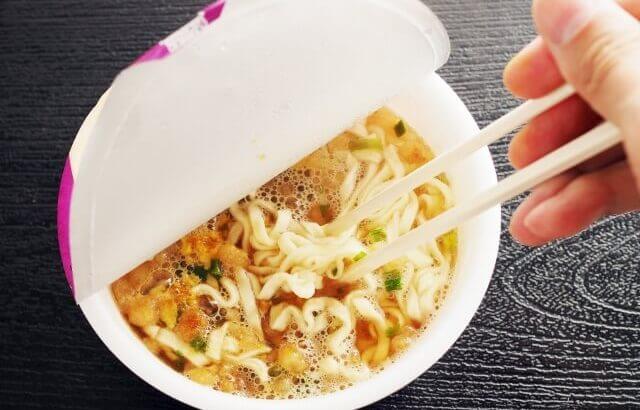Traditional Japanese cuisine is a complex and often difficult world for many Westerners. The flavors, textures and even the process with which each dish is prepared and packaged are certainly light years away from their idea of a meal. Almost everyone knows the cup noodles, but what is hidden behind an attractive packaging and a meal so convenient and fast to prepare?
Contents
The instant noodles revolution
View this post on Instagram
The instant noodles (or instant ramen) were born in Japan in Osaka in 1958, 10 years after Japan’s defeat in World War II. In those years the new media were bringing a wave of desire for novelty, television began to enter people’s homes and to drastically change the patterns of popular consumption. The first instant noodles were invented by Momofuku Ando, the Japanese entrepreneur who later founded the well-known food company Nissin Food. The “Chicken Ramen” was a product for the revolutionary era, obtained by dehydrating spaghetti seasoned and flavored steamed and practically ready-to-eat. Momofuku Ando himself conceived and organized the entire industrial production chain for these revolutionary products that could be ready to be enjoyed with the addition of boiling water and 2 minutes of waiting. This “magical ramen” (so nicknamed for its modernity) immediately became very popular thanks to a mass advertising campaign (yet another novelty for the time) and spread throughout the state.
The evolution of instant noodles and the birth of cup noodles
The instant noodles with coordinated flavoring powder package arrived later and this second version was even more acclaimed for its taste and superior quality. Since then, more and more different types of instant noodles have been marketed and the quality of the product has been greatly improved over time.
But it was only in 1971 that instant ramen took on the final appearance that characterized it for the following decades and made it recognizable worldwide (and even easier to consume). Until now, instant noodles were sold in a simple plastic package then the umpteenth revolutionary idea gave the opportunity to obtain a restyling even more practical and attractive: they were born the “Cup noodles”. The ingenious idea was to pack the noodles and the sachets of the condiments directly into a cylindrical polystyrene container which, being heat-resistant, could act directly as a pot for boiling water and as a “bowl” from which to eat. From then on, the instant ramen cup became the emblem par excellence of “fast and cheap” food that everyone could afford at any time of day.
The record numbers of instantaneous ramen
Some countries have quickly discovered and appreciated Japanese instant noodles while in some other parts of the world it has taken much longer to penetrate the market. Global annual demand for instant noodles was estimated at around 15 billion portions in 1990; it grew to 50 billion portions in 2001 and exceeded 100 billion portions in 2012. Rapid growth was guaranteed by the five principles Momofuku Ando established in the 1960s as fundamental to the food of the future: accessibility, convenience, safety and hygiene, longevity and palatability.
The modern perception and future of the world’s most popular noodles
Obviously, since the post-war years, the concept of food in Japan has changed a lot. Today, shops and restaurants selling fresh, quality and organic products are depopulated in the country, and many Japanese people don’t eat instant noodles as often as they did a few decades ago. The highest consumption of instant noodles is in fact in countries that seek cheaper solutions to fill the stomach as in Southeast Asia and India, where still the poverty level of a good slice of the population keeps low the health consciousness regarding the food sector. However, there is still a very large slice of Japanese who are fond of instant ramen, among whom the very young and university students who are always hungry and eager for a tasty, quick and incredibly cheap meal stand out.
If you really want to know all about this dish during your trip to Japan, plan a visit to the museum dedicated to the Cup Noodles! You’ll find one in Osaka and one in Yokohama (about 40 minutes from downtown Tokyo).
